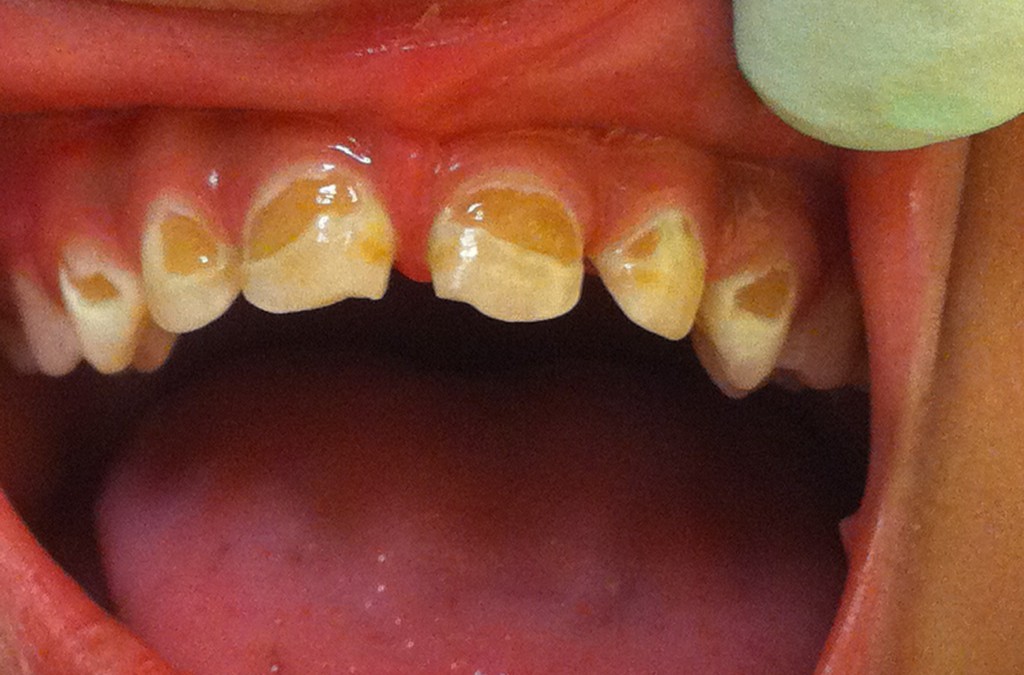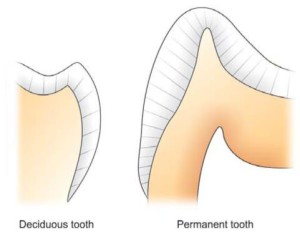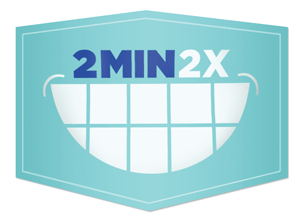
Cavities, Cooties, and Colds…Only ONE is Not Spread.
February is Children’s Dental Health month! Often, as a dentist, we hear, “The cavities are only on baby teeth, they will fall out.” This is true, but the impact of these “baby” or primary teeth have an impact on your child’s current well-being and future orthodontic (braces!!) treatment. Baby (primary) teeth are “placeholders” for your child’s adult teeth. When a primary tooth is lost before it’s natural time, it affects the alignment of the child’s adult/permanent teeth.
 KIDDO TEETH ARE FRAGILE!
KIDDO TEETH ARE FRAGILE!
The enamel, or outer shell of a tooth (think of it like the nail on your finger), that protects the softer inner layer (dentin) and nerve/pulp of a tooth from acids and sugars, is MUCH thinner in primary (also called baby or deciduous) teeth than it is in an adult tooth. A primary tooth can develop a cavity in only six months where a permanent adult tooth can take up to 18 months to develop a “smooth surface” treatable cavity.
PREVENTION IS CHEAPER THAN REPAIR
Prevention, by definition, means stopping an anticipated problem before it starts. A child should be seen at the dental office by their FIRST birthday! You are probably saying, “Why – they hardly have any teeth!”. This is PREVENTION and it’s for many reasons:
- Parents benefit from “Oral Health Education” including; dietary counseling, hands-on training in teeth cleaning, risk assessment for decay/cavities, and fluoride recommendations based on individual age and needs.
- The “Age One” visit may give the parent insight into potential problems and an appropriate schedule for visits can be advised by your dental professional.
WHAT CAUSES CAVITIES?
 In infants, a specific pattern of decay, known as “Baby Bottle Decay” (BBD) was characterized by decay associated with a night-time bottle that contained ANYTHING except water. Juices have fructose sugars, milk has lactose sugars, and sugar sweeteners in Kool-Aid and soda create a feeding ground for bacteria.
In infants, a specific pattern of decay, known as “Baby Bottle Decay” (BBD) was characterized by decay associated with a night-time bottle that contained ANYTHING except water. Juices have fructose sugars, milk has lactose sugars, and sugar sweeteners in Kool-Aid and soda create a feeding ground for bacteria.
The more modern term is “Early Childhood Caries” (ECC) and it includes age groups beyond infancy to reflect a larger age group where the root cause is usually; a “sippy-cup,” at-will breastfeeding throughout the night, pacifiers with sweeteners, and teething-soothing liquids used with much regularity.
Bacteria found in the oral cavity feeds on these sugars creating acids that degrade the already fragile enamel of children’s teeth. This typically looks like brown spots on the outsides of front teeth and then progresses to the back of the mouth. However, it can occur in any tooth. If a parent observes brown spots on a child’s tooth/teeth, consult a dental professional immediately.
CAVITIES CAN BE SPREAD TO YOUR BABY!
The bacteria, streptococcal mutans (SM), is not present in the mouth of a newborn. Studies indicate that SM is introduced from a parent or caregiver through kissing, masticated (chewed) food, or other oral contact.
HOW DO I GET OFF THE “CAVITY CAROUSEL”?
We all know you cannot help but kiss your baby. (Let’s get serious – those cheeks! those lips!) Bacteria that produces cavities will be introduced to your child at some point in his or her life. So, here are some tips to promote oral health:
- Start “cleaning” your infant’s gums with a warm washcloth daily, before teeth even erupt! This will get your infant used to oral cleaning and will help when teething begins.

- Complete an “Age One” visit. You can see your General Dentist or choose to see a specialist who is deemed a Board Certified “Pediatric Dentist.”
- Practice 2:2×1 = Two minutes, twice per day brushing. (You should floss while your kiddo brushes!) You should floss your child’s teeth as soon as two neighboring teeth touch.
- A child should NOT be brushing their teeth UNSUPERVISED until SEVEN years old. SEVEN.
- A parent should brush their child’s teeth once per day, preferably at bedtime.
- Give the child “ownership” of brushing in the morning, depending on age and responsibility level.
- Ages 3-6: a grain of rice smear of fluoride toothpaste; 6+ years old; a pea-sized amount.
- Natural sugars (raisins, fruit snacks) and carbohydrates (cereals, crackers, granola) are sticky and bacteria can easily interact over periods of time. Limit FREQUENCY of snacks. This reduces the sugar introductions.
- Saliva is a natural healer! Reducing the frequency of feedings/snacks increases salivary healing – it takes time! Hourly snacking will not allow the mouth to defend against the sugars.
There are many resources also available on the American Dental Association‘s website.
MY 2 ½ YEAR OLD HASN’T SEEN THE DENTIST…
No matter how old, you aren’t too old for a first visit. Don’t sweat it! The AAPD just changed the “rules” recently! Call or Request and Appointment!
Your dentist should be willing to give your kiddo a “ride” in the chair and show what may be seen or felt in an appointment. Just because your child’s first (or second, or third) appointment is a total melt-down; you are introducing your child to a lifetime of good oral health. Don’t be embarrassed if your kiddo loses it. (It happens even when you’ve been practicing at home!) And if your general dentist refers your child to a specialist; it’s not a failure on your part. Taking care of your infant’s teeth guarantees when the “threenager” time hits, you will know that they can take care of their teeth when they are really a teen.


